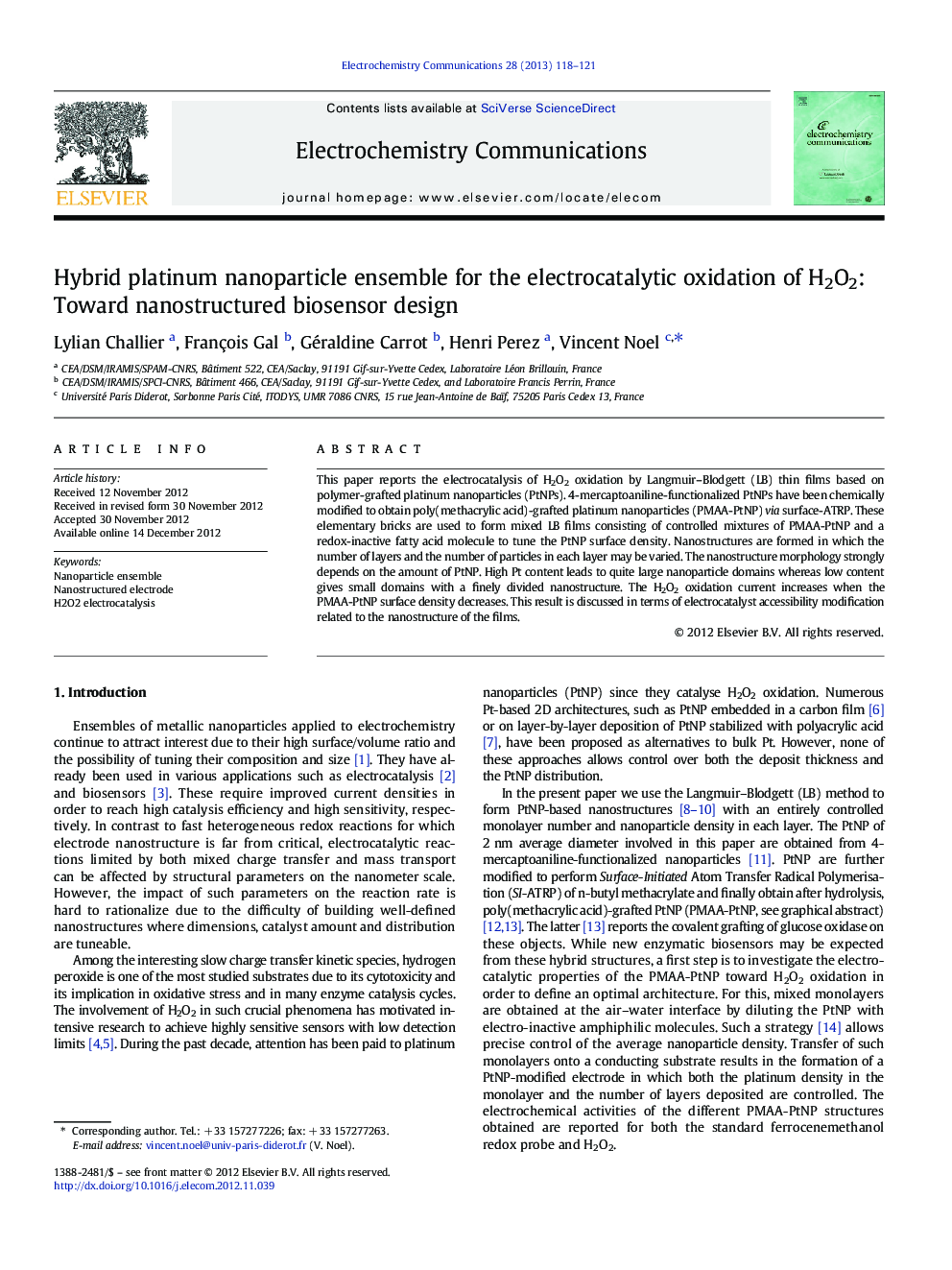| Article ID | Journal | Published Year | Pages | File Type |
|---|---|---|---|---|
| 179488 | Electrochemistry Communications | 2013 | 4 Pages |
This paper reports the electrocatalysis of H2O2 oxidation by Langmuir–Blodgett (LB) thin films based on polymer-grafted platinum nanoparticles (PtNPs). 4-mercaptoaniline-functionalized PtNPs have been chemically modified to obtain poly(methacrylic acid)-grafted platinum nanoparticles (PMAA-PtNP) via surface-ATRP. These elementary bricks are used to form mixed LB films consisting of controlled mixtures of PMAA-PtNP and a redox-inactive fatty acid molecule to tune the PtNP surface density. Nanostructures are formed in which the number of layers and the number of particles in each layer may be varied. The nanostructure morphology strongly depends on the amount of PtNP. High Pt content leads to quite large nanoparticle domains whereas low content gives small domains with a finely divided nanostructure. The H2O2 oxidation current increases when the PMAA-PtNP surface density decreases. This result is discussed in terms of electrocatalyst accessibility modification related to the nanostructure of the films.
Graphical abstractFigure optionsDownload full-size imageDownload as PowerPoint slideHighlights► H2O2 oxidation by Langmuir–Blodgett films based on polymer-grafted Pt nanoparticles ► Nanostructures in which the number of layers and of particles in each layer is tuned. ► The nanostructure morphology depends strongly on the amount of Pt nanoparticles. ► The H2O2 current increases when the number of particles in one layer decreases.
